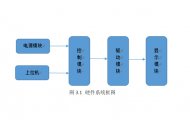基于STC单片机的8*8*8光立方系统设计

基于STC单片机的8*8*8光立方系统设计(开题报告,外文翻译,论文10200字)
摘要
随着生活水平的不断提高,各种显示设备层出不穷,而本课题将构建一个光立方控制系统。光立方控制系统可以显示多种动画,具有极高的观赏性,并且本光立方系统给出了三种控制命令,可以根据自己的需要,将本系统看做一个显示模块,输出自己想要的图像。
该光立方控制系统将用512个发光二极管搭建成一个长、宽、高为8*8*8的LED灯立方体显示器。在该系统中,采用STC60S2单片机作为控制模块,以单片机最小系统为核心,并以TM1818与MC74HC138芯片构成驱动电路,使每个LED灯均能单独得到控制。上位机发送动画信号,通过控制每个LED灯的亮灭,得到一帧图。由于人眼存在视觉暂留现象,不断的刷新每一帧图,便可以形成各种各样的动态图像,比如水滴下落、上升、旋转等多种动画效果,同时也可以在上位机中播放音频文件,光立方显示音频信号的频谱特性。最终的显示效果表明此设计实现了预期的功能,同时能稳定,流畅地工作,并具有很好的扩展性。
关键词:单片机 LED 光立方 图像显示 频谱显示
Design of 8*8*8 Light Cube system based on STC Microcontroller [资料来源:http://Doc163.com]
Abstract
Various display devices are available, with the continuous development of living standards ,while this capstone project will build a light cube control system. Light Cube control system can display a variety of animations with highly ornamental effects. The light cube system will give three control commands, according to which everyone can display the output image using the system.
The light cube control system will be built with 512 light-emitting diodes into a length, width and height of 8 * 8 * 8 LED light cube display. In this system, STC60S2 SCM is used for composing the core circuit and MC74HC138 chip is used to constitute the driving circuit, by which each LED lamp can be controlled separately. PC send animation signal to control each LED lamp light off or on. Due to the presence of Visual staying phenomenon, constantly refreshing every frame images, it can form a variety of dynamic images, such as water droplets fall, rise, spin, and other animation effects, but can also play audio in the host computer file, light cube display audio signal spectral characteristics. The final display indicates that the design and implementation of the desired functionality, stable, smooth working, and has good scalability. [版权所有:http://DOC163.com]
Key Words: Microcontroller; LED; Light cube; Image display ; Spectrum display
[资料来源:https://www.doc163.com]


目录
摘要 II
Abstract III
目录 IV
第一章 绪论 1
1.1 课题研究的背景 1
1.2 论文所做的工作 2
第二章 系统设计概述 3
2.1 系统的内容和要求 3
2.2 系统的方案选择 4
2.2.1 生成动画 4
2.2.2 驱动模块 4
2.2.3 控制模块 5
2.2.4 单片机编程语言 5 [资料来源:https://www.doc163.com]
第三章 硬件系统设计 7
3.1 硬件系统框图 7
3.2 控制模块 7
3.2.1 时钟电路 7
3.2.2 复位电路 8
3.3 驱动模块 8
3.3.1 束驱动电路 9
3.3.2 亮度调节电路 10
3.3.3 层驱动电路 10
3.4 显示电路模块 12
3.5 整体电路 12
第四章 软件系统设计 13
4.1 主程序 13
4.2 通信协议 14
4.3 上位机程序 15
4.4 调试程序 16
第五章 系统调试 18
5.1 软件系统调试 18
5.2 硬件系统调试 19
5.3 整体调试 20
结束语 22
致谢 24 [资料来源:https://www.doc163.com]
